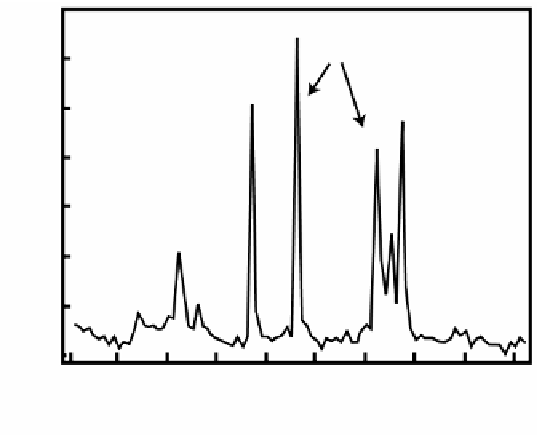Environmental Engineering Reference
In-Depth Information
Figure 3.3
Effects of various indoor combustion sources/cooking activities on in-
door PM
concentrations. (Courtesy of P. Koutraikis, Harvard University.)
2.5
of carbon particles which are predominantly in the respirable size range.
Carbon or soot production varies with candle type, with scented candles
reported to emit higher levels. Particularly high carbon emissions have been
reported when candles are extinguished. The effect of candle-burning, as
well as other combustion activities, on short-term PM
levels can be seen
2.5
in
Figure 3.3
.
In addition to soot particles, candles can be expected to emit NO
, CO,
and aldehydes. Scented candles can be expected to emit a variety of odorif-
erous aldehydes, alcohols, and esters. Soot particles are likely to contain
significant quantities of PAHs. Because of their small size and potential to
contain potent carcinogens, carbon particles associated with significant can-
dle-burning may be of public health concern.
At present, homeowners are primarily concerned with black deposits on
indoor surfaces and appliances. Such deposits appear on surfaces where
there are significant thermal differences. This phenomenon, known as
“ghosting,” occurs on wall surfaces near ceilings, electrical outlets, and stud
areas on outside walls; near heating sources and light fixtures; etc. It is due
to the thermophoretic deposition of airborne particles. Examination of such
particles may reveal the presence of finely divided carbon particles or small
burned candle fragments.
The “ghosting” phenomenon has also been reported in residences in
which no candle burning has taken place. In one residential investigation,
the author identified fragmented neoprene (which contains carbon black)-
coated insulation in an air conditioning unit as the probable source of the
apparent “carbon” deposits or, as some have described it, “black magic dust.”
x

































